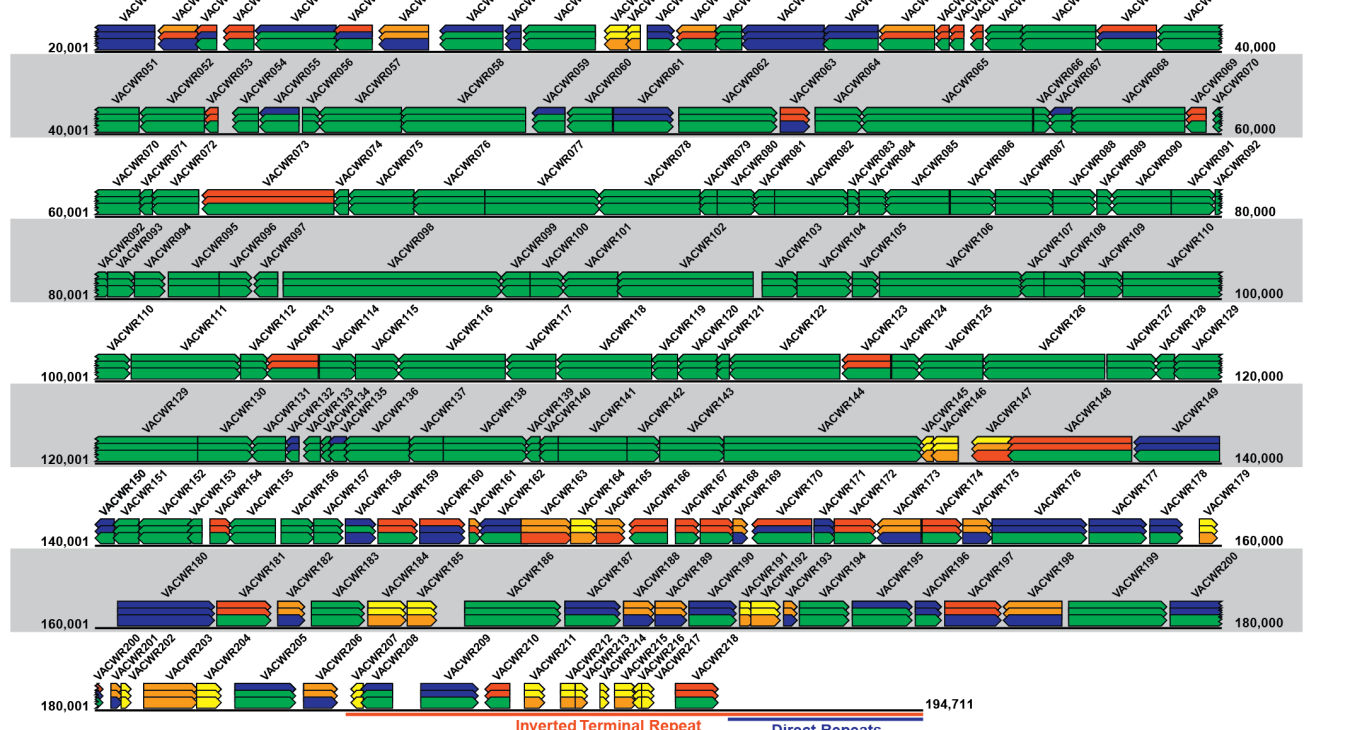ICTV Report on the dsDNA virus family Poxviridae
Poxviridae is a family of enveloped, generally oval or brick-shaped viruses, 220–450 nm long, 140–260 nm wide and 140–260 nm thick with a genome comprising a single linear molecule of dsDNA of 128–375 kbp with covalently-closed ends (Table 1.Poxviridae). The family includes two subfamilies. Members of the subfamily Chordopoxvirinae infect vertebrates and are classified in the genera Avipoxvirus, Capripoxvirus, Centapoxvirus, Cervidpoxvirus, Crocodylidpoxvirus, Leporipoxvirus, Macropopoxvirus, Molluscipoxvirus, Mustelpoxvirus, Orthopoxvirus, Oryzopoxvirus, Parapoxvirus, Pteropopoxvirus, Salmonpoxvirus, Sciuripoxvirus, Suipoxvirus, Vespertilionpoxvirus and Yatapoxvirus. Members of the Chordopoxvirinae include important pathogens of humans (variola virus, the causative agent of smallpox), livestock animals and wildlife, including aquatic species. Infections typically result in the formation of lesions, skin nodules, or disseminated rash and can be fatal in some cases. Members of the subfamily Entomopoxvirinae infect insects, and are classified into four genera; Alphaentemopoxvirus, Betaentemopoxvirus, Deltaentomopoxvirus and Gammaentemopoxvirus. Generally, members of the above entompoxvirus genera infect a different order of insect, respectively Coleoptera, Lepidoptera, Orthoptera and Diptera. Infection with members of the subfamily Entompoxvirinae is invariably fatal, but disease progression is generally slow. The subfamily Entomopoxvirinae includes one species, Diachasmimorpha entomopoxvirus that is unassigned to a genus.

